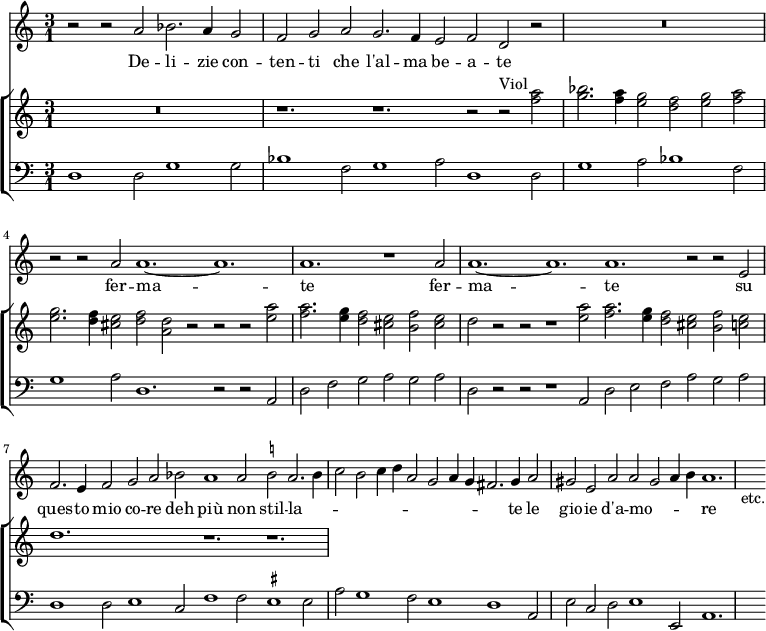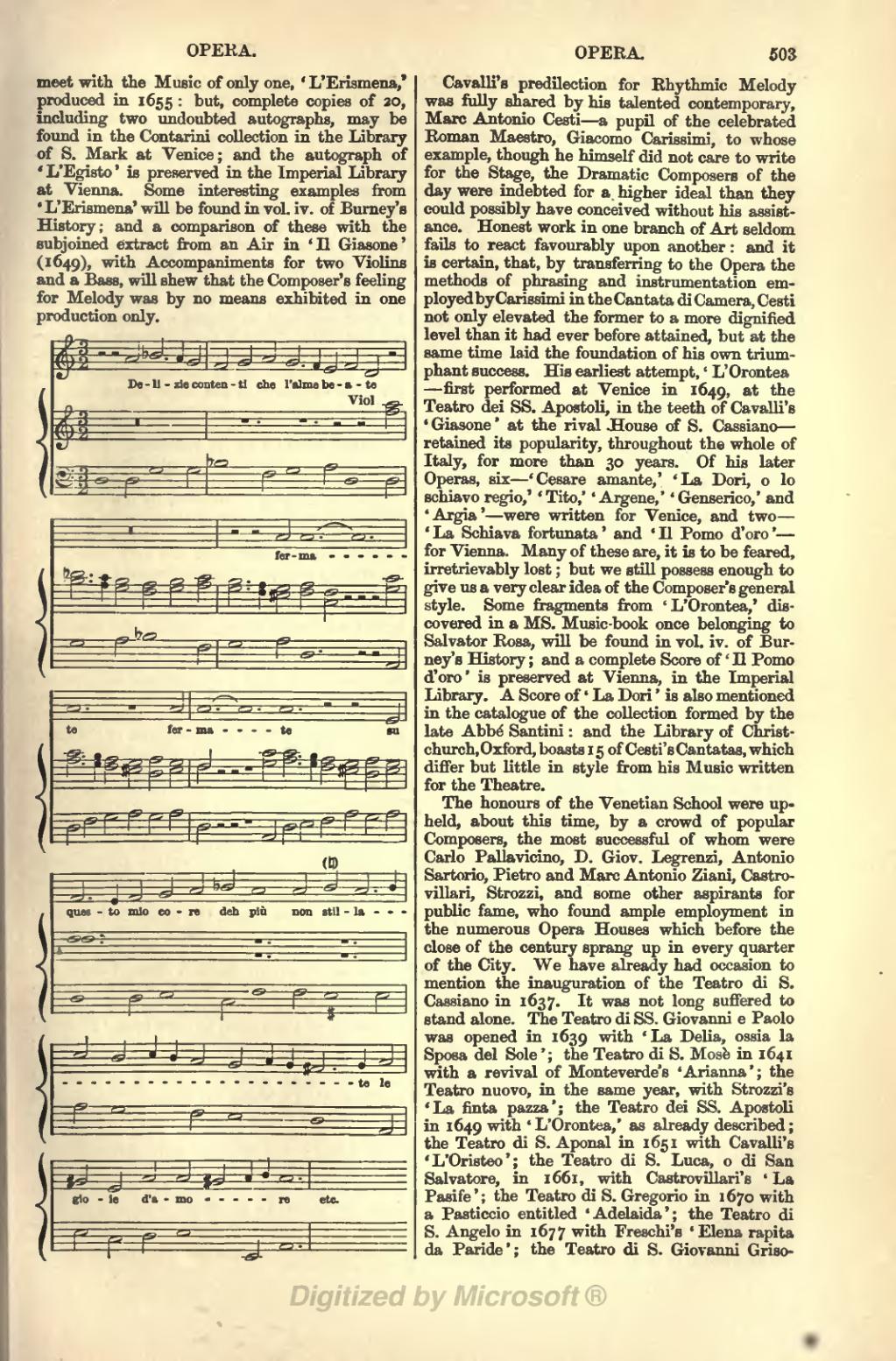meet with the Music of only one, 'L'Erismena,' produced in 1655: but, complete copies of 20, including two undoubted autographs, may be found in the Contarini collection in the Library of S. Mark at Venice; and the autograph of 'L'Egisto' is preserved in the Imperial Library at Vienna. Some interesting examples from 'L'Erismena' will be found in vol. iv. of Burney's History; and a comparison of these with the subjoined extract from an Air in 'Il Giasone' (1649), with Accompaniments for two Violins and a Bass, will shew that the Composer's feeling for Melody was by no means exhibited in one production only.

Cavalli's predilection for Rhythmic Melody was fully shared by his talented contemporary, Marc Antonio Cesti—a pupil of the celebrated Roman Maestro, Giacomo Carissimi, to whose example, though he himself did not care to write for the Stage, the Dramatic Composers of the day were indebted for a higher ideal than they could possibly have conceived without his assistance. Honest work in one branch of Art seldom fails to react favourably upon another: and it is certain, that, by transferring to the Opera the methods of phrasing and instrumentation employed by Carissimi in the Cantata di Camera, Cesti not only elevated the former to a more dignified level than it had ever before attained, but at the same time laid the foundation of his own triumphant success. His earliest attempt, 'L'Orontea'—first performed at Venice in 1649, at the Teatro dei SS. Apostoli, in the teeth of Cavalli's 'Giasone' at the rival House of S. Cassiano—retained its popularity, throughout the whole of Italy, for more than 30 years. Of his later Operas, six—'Cesare amante,' 'La Dori, o lo schiavo regio,' 'Tito,' 'Argene,' 'Genserico,' and 'Argia'—were written for Venice, and two—'La Schiava fortunata' and 'Il Pomo d'oro'—for Vienna. Many of these are, it is to be feared, irretrievably lost; but we still possess enough to give us a very clear idea of the Composer's general style. Some fragments from 'L'Orontes,' discovered in a MS. Music-book once belonging to Salvator Rosa, will be found in vol. iv. of Burney's History; and a complete Score of 'Il Pomo d'oro' is preserved at Vienna, in the Imperial Library. A Score of 'La Dori' is also mentioned in the catalogue of the collection formed by the late Abbé Santini: and the Library of Christchurch, Oxford, boasts 15 of Cesti's Cantatas, which differ but little in style from his Music written for the Theatre.
The honours of the Venetian School were upheld, about this time, by a crowd of popular Composers, the most successful of whom were Carlo Pallavicino, D. Giov. Legrenzi, Antonio Sartorio, Pietro and Marc Antonio Ziani, Castrovillari, Strozzi, and some other aspirants for public fame, who found ample employment in the numerous Opera Houses which before the close of the century sprang up in every quarter of the City. We have already had occasion to mention the inauguration of the Teatro di S. Cassiano in 1637. It was not long suffered to stand alone. The Teatro di SS. Giovanni e Paolo was opened in 1639 with 'La Delia, ossia la Sposa del Sole'; the Teatro di S. Mose in 1641 with a revival of Monteverde's 'Arianna'; the Teatro nuovo, in the same year, with Strozzi's 'La finta pazza'; the Teatro dei SS. Apostoli in 1649 with 'L'Orontes,' as already described; the Teatro di S. Aponal in 1651 with Cavalli's 'L'Oristeo'; the Teatro di S. Luca, o di San Salvatore, in 1661, with Castro villari's 'La Pasife'; the Teatro di S. Gregorio in 1670 with a Pasticcio entitled 'Adelaida'; the Teatro di S. Angelo in 1677 with Freschi's 'Elena rapita da Paride'; the Teatro di S. Giovanni Griso-
